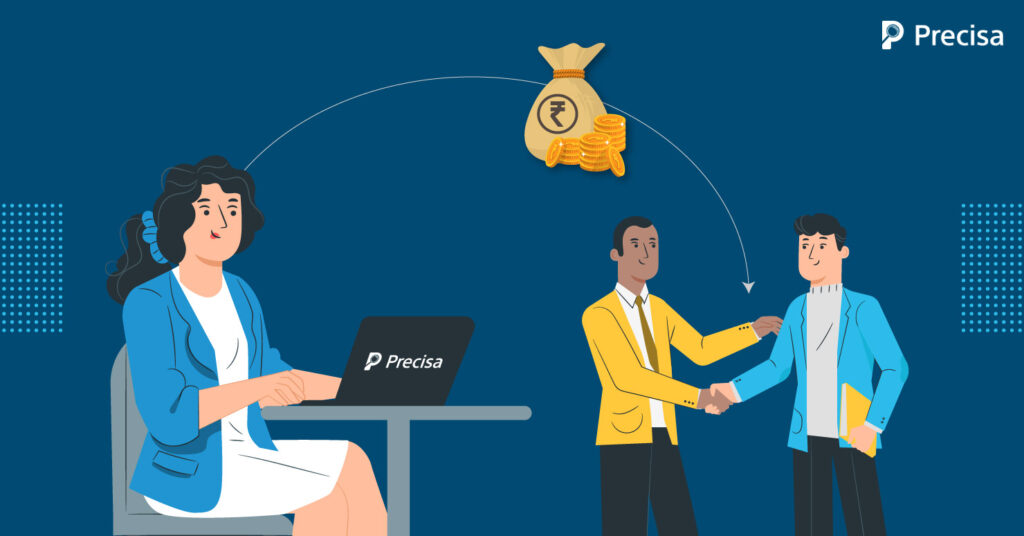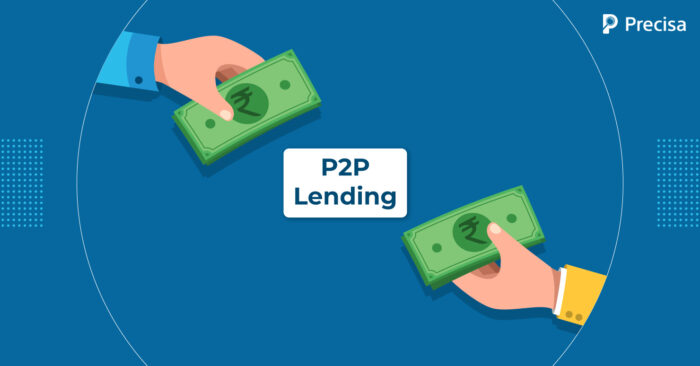How Precisa Can Help P2P Lending Firms

Peer-to-peer (P2P) lending is a financial innovation that emerged over time — To improve the current state of financial inclusion and to act as a substitute for bank loans and traditional financing options. Becoming a highly essential alternative lending platform, it is projected to grow at a CAGR of more than 20%, touching $10.5 billion in 2026. So how exactly can P2P lending reach that level of growth?
With the Best Fintech Solutions. Let’s take a closer look at this.
What is P2P Lending?

P2P lending is a practice that enables lending and borrowing between individuals directly, without any financial institution in between. This practice has come into existence to centralise and formalise loans while easing the lending process.
In this mechanism, the investors and borrowers (the participants) are connected either via a website or an app — that handles setting the terms of entry, analyzes the profiles, and enables the lending and borrowing process.
Some of the key benefits of P2P lending are:
- Providing the borrowers with a possibility to get better interest rates than banks.
- Providing a modern platform to access loans to individuals who would not be able to get through a traditional financial institution
- Providing an efficient and easy online lending experience
- Providing investors with a likelihood of getting a better return on their investment
How does P2P Lending Work?
While starting, investors need to build an investor base by registering on the portal. Similarly, borrowers need to fill out an online form with their personal and financial information. This information is further processed for a credit evaluation to ascertain the candidate’s risk profile.
All these are displayed to the potential investors with their varying credit scores and profiles for investors to choose from. Once the investor decides on the loan application he wishes to fund; the portal sends the money to the borrower’s account after deducting processing charges.
What are some challenges faced by P2P Lending?
While P2P lending can benefit both borrowers and investors, it has its share of challenges that can be faced during the lending process. Since the Government does not safeguard the lender’s investment in this process — the process calls for a thorough examination of borrowers’ profiles to evaluate accurate results for zero chances of default.
The portals often receive a heavy flow of applicants and registrations on the portal, which can be troublesome to extract and create an accurate credit risk profile of the borrower. Inaccurate information or analysis, in such a case, increases the likelihood of default. In addition, some borrowers often mislead investors with fake information or identities to borrow money. In such cases, the likelihood of default increases.
To overcome such challenges and reduce the rate of default, investors are advised to diversify their lending to multiple borrowers. Apart from diversifying investment, it is also essential that P2P lending firms leverage the right technology to improve their lending process.
Seven Ways Precisa Can Help P2P Lending Firms
The ever-evolving financial industry is a result of continuous successful implementations of technology. P2P lending is no exception. Here’s how a bank statement analyser can help improve the tiresome lending process for the P2P lending firms:
1. Accurate Bank Details Extraction
Precisa is just the perfect tool to help extract raw data from all the uploaded documents and statements to organise information. For P2P lending firms, multiple bank statements for various applicants can thus be easily accessed, deciphered and structured in just a few seconds.
2. Easy Aggregate Analysis For Multiple Accounts
Precisa is a game-changer in accessing financial data. It follows an Account Aggregator framework that permits accessing and analysing applicants’ in-depth financial data with their permission and for multiple bank accounts — all in one place. Such a detailed assessment helps detect anomalies across various bank accounts and helps with preparing an error-free report.
3. Effortless Categorisation Tab
Precisa can segregate the extracted information in a way that helps firms beat the uphill challenge of correctly analysing based on categories. With 30 + inflow and categories, it allows for an in-depth assessment to draw an accurate credit risk profile of the loan applicants.
4. Quick Counterparty Risk Evaluation
Precisa’s enhanced analytics and predictive capabilities help monitor counterparty risk. Providing detailed data of the benefactors and recipients of a business along with debit and credit transactions helps identify irregularities and better understand the loan applicant’s financial health.
5. Evaluate Biz Cash Flow
Precisa provides an empowering view of the applicant’s cash flow. Its business cash flow tab shows monthly and quarterly summary metrics related to business inflow (Credit) and outflow (Debit) transactions to quickly ascertain risk. It is a means of the quickest time to the truth when it comes to analysing constant cash collections and transactions carried out.
6. eStatement Authenticity Check
P2P lenders can use Precisa to validate the authenticity of uploaded bank statements to spot fraudsters and reduce default risks. It identifies unexpected discrepancies or behaviours and assigns an authenticity rating ranging as fraud, original, and unknown. In addition, it uses an effective Penny Drop mechanism, wherein it deposits one rupee to the user’s account to verify his bank account.
7. Spot Circular Transactions
Identifying red flags such as circular transactions is no cakewalk and can easily fool a firm of an applicant’s actual financial status. Precisa thus helps in detecting the back and forth flow of funds between the account holder’s various bank accounts. The circular transaction tab mentions all such transactions in the system, so the P2P firms consider this factor while preparing the loan applicant’s profile.
Closing Thoughts
In a nutshell, a powerful bank statement analysis tool such as Precisa can help P2P firms prepare accurate credit risk profiles for extending zero-risk credit. If you’re a P2P firm looking to level up your process, sign up for a free demo today.


